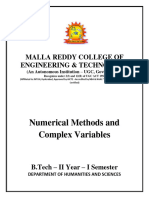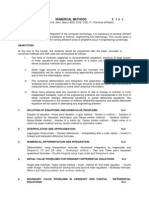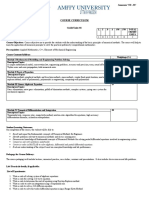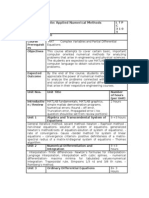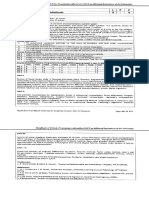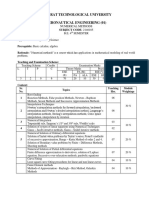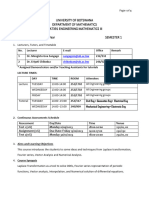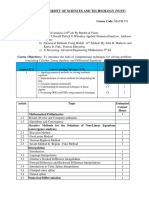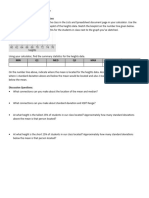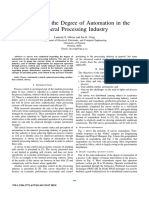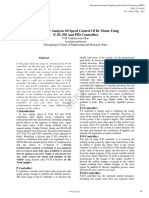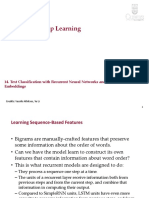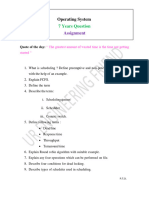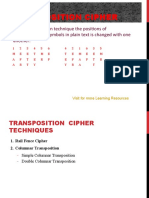0% found this document useful (0 votes)
6 views5 pagesNumerical Methods Course Profile
The Engineering Mathematics-IV course (MAT 05412201) focuses on numerical methods and programming, aiming to enhance students' scientific and practical skills. It covers topics such as solving equations, finite differences, interpolation, and numerical integration, with a total of 141.5 hours of student learning time. Assessments include formative and summative evaluations, with a mix of lectures, discussions, and independent learning strategies.
Uploaded by
Siddiquee FaisalCopyright
© © All Rights Reserved
We take content rights seriously. If you suspect this is your content, claim it here.
Available Formats
Download as PDF, TXT or read online on Scribd
0% found this document useful (0 votes)
6 views5 pagesNumerical Methods Course Profile
The Engineering Mathematics-IV course (MAT 05412201) focuses on numerical methods and programming, aiming to enhance students' scientific and practical skills. It covers topics such as solving equations, finite differences, interpolation, and numerical integration, with a total of 141.5 hours of student learning time. Assessments include formative and summative evaluations, with a mix of lectures, discussions, and independent learning strategies.
Uploaded by
Siddiquee FaisalCopyright
© © All Rights Reserved
We take content rights seriously. If you suspect this is your content, claim it here.
Available Formats
Download as PDF, TXT or read online on Scribd
/ 5




